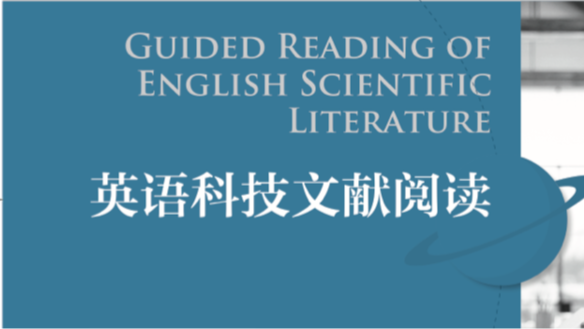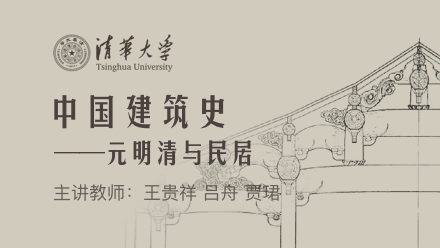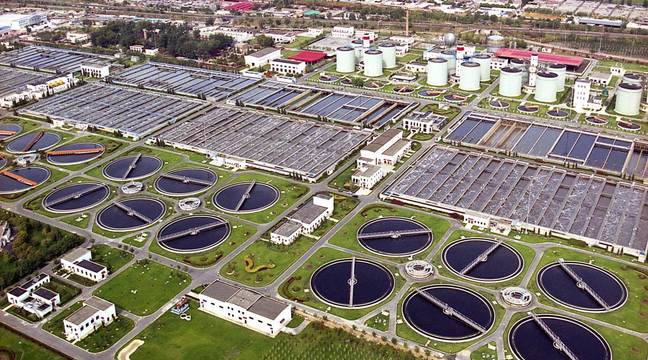
当前课程知识点:History of Chinese Architecture Part II > 10 Cities and Architecture of the Ming Dynasty > Section 1 > Ming Xiaoling Tomb in Nanjing and the Ming Tombs in Changping
返回《History of Chinese Architecture Part II》慕课在线视频课程列表
返回《History of Chinese Architecture Part II》慕课在线视频列表
下面我们来给大家介绍一下明代的皇家陵寝建筑
在中国历代王朝所有的陵寝当中
明朝的皇陵系统很可能是最复杂的
它前后一共在六个地方都建有陵寝 总数有十八座之多
首先朱元璋在位期间
就已经在南京钟山的山麓营建孝陵
作为他日后的归葬之地
同时又在自己的老家泗州为三代祖先修建祖陵
在故乡凤阳为自己的父母修建皇陵
所以朱元璋的时代就已经建了三种陵寝了
这是明朝祖陵的神道
那么明成祖朱棣迁都北京以后 他在昌平营建长陵
他之后的子孙们基本上都是在这个昌平
这个长陵的附近修建新的陵寝
最后形成了我们现在所知道的十三陵的格局
在明朝中叶时候曾经出过一个代宗景泰皇帝
因为他在死后有一度被废了帝号
所以他并没有机会葬到十三陵这个区域当中去
而是以亲王之礼葬在北京西郊玉泉山的金山口
他的陵寝的规制就比十三陵要低一些
此外我们前面提到过的明世宗嘉靖皇帝的父亲兴献王
因为后来被他儿子又追封为皇帝了
所以他安葬的那个王陵被升格为皇陵了 起名叫显陵
那么它的位置是在湖北的钟祥
当然我们最值得一说的
是南京的明孝陵和昌平的十三陵
孝陵作为开国皇帝的陵墓 它的选址非常地优越
恰好位于南京钟山的南部的这个山坡上
它最大的一个特点就是陵墓前面这个漫长的神道
并不是笔直的 而是顺应地形
绕过了梅花山 然后再向北去延展
这个在中国所有的皇家陵寝当中都算是一个特例
主要的原因是因为这个梅花山上面
仍然保存着东吴开国皇帝孙权的蒋陵
也许是为了表示对前朝皇帝的一种尊敬吧
朱元璋采取的是比较谦虚的做法 绕道而行
这个神道是每一座陵寝的前导空间
一般会在两侧布置各种各样的石雕的动物或者人像
我们称之为石像生
过了这个神道之后 它还会设有一些固定的设施
比如说棂星门 石桥 最后才能到达主陵区
一般主陵区是由围墙来环绕的
最核心的空间就是它北边的是一个宝顶
其实是一个巨大的坟包
在这个宝顶的前面一般会设一圈城墙
这个城墙上面建有一个城门楼 我们称之为方城明楼
再前面会设有祭祀用的大殿 一般叫祾恩殿
包括一些附属的门殿
孝陵的这个建设就基本上奠定了
明代皇家陵寝的一个布局的模式
之后的几乎所有的皇陵都是遵照这个模式
来进行适度的变通所形成的一个效果
我们再来看一下十三陵
十三陵位于北京昌平的天寿山
环境位置非常地优越 依山就势
整个这个十三陵它其实是共用一条主神道
这条神道是在成祖朱棣修筑长陵的时候就奠定的
它好像是整个陵区的一条主干线
然后其他的各座陵区
基本上都相当于这个主干上面延伸出来的分支
是这样的一个特殊的空间关系
从成祖一直到末代的崇祯皇帝
先后有十三位皇帝的遗体安葬在这片地方
这条公用的主神道以宏大的石牌坊
作为一个入口的标志
然后沿着神道也是会有一系列的这个仪式性的建筑
比如说大红门 华表 碑亭 石像生 棂星门
相应的每一座帝陵是分别会依托一座山峰来设
各自独立 但是又能够组合成一个很和谐的群体
我们现在可以看到的是长陵的神道 石像生
还有这个碑亭里面所供奉的
吹捧皇帝一生功绩的神功圣德碑
这是它的碑楼和小碑亭
这是十三陵各个主陵区的平面图
我们会发现彼此之间大同而小异
基本上都会在这个最北边设有宝顶
然后在前面有方城明楼
再前面有祾恩殿这个区域
实际上这个宝顶是皇帝真正的葬身之所
然后这个祾恩殿是举行祭祀典礼的一个地方
其中长陵的规模最大 规制也最完备
这是长陵祾恩殿的一个立面图
我们看到了 这是一个标准的九开间重檐庑殿的大殿
仅次于紫禁城奉天殿的另外一座非常恢弘的皇家建筑
这个是站在祾恩门 然后看祾恩殿的这个效果
我们发现不同的建筑之间这个空间关系
是事先经过很严格的推敲和设计的
这个是长陵的方城明楼
在每一座陵区的宝顶下面都设有地宫
其中唯有明朝神宗万历皇帝的定陵的地宫被发掘出来了
我们发现这个地宫本身的构造也是比较复杂的
它其实也可以分成前后不同的殿 还有左室和右室
整个十三陵除了有非常壮观的这些建筑物之外
我们也发现它的环境塑造艺术同样达到了非常高的水平
其中这个神道能够依据两侧山峰的高度 来不断地去调整位置
在整个陵区主要种植的是松树和柏树
一年四季常青 形成了一个庄严而肃穆的气氛
-Section 1
--Xanadu and Dadu of the Yuan Dynasty
--Religious Buildings of the Yuan Dynasty
--Buildings of Science and Technology in the Yuan Dynasty
-Section 2
--Reconstruction of the Ming System and an Overview of Its Cities and Architecture
--Cities and Towns Outside the Capitals in the Ming Dynasty
-Homework
-Section 1
--Forbidden City of Beijing in Ming Dynasty
--Imperial Altars and Temples of Beijing in Ming Dynasty
--Temple of Confucius in Qufu, Ming Dynasty
--Ming Xiaoling Tomb in Nanjing and the Ming Tombs in Changping
-Section 2
--The Buddhist Architecture of Ming Dynasty
--Taoist architecture of the Ming Dynasty
--Architecture of the Educational Institution of Ming Dynasty
-Homework
-Section 1
--An introduction to architecture of the Qing Dynasty1
--An introduction to architecture of the Qing Dynasty 2
-Section 2
-Section 3
-Homework
-Section 1
--Cities and urban facilities in the Qing Dynasty
--Government office mansions and architectural rules1
--Government office mansions and architectural rules 2
-Section 2
--Temples and altars, religious architecture and spiritual life
--Commercial architecture and econimic life
--Theaters and recreational life
-Homework
-Section 1
--Architecture: Europe and China & Imperial Specifications for State Buildings
-Section 2
--The architectural artisans 1
--The architectural artisans 2
--The architectural artisans 3
-Section 3
--Appreciation and Analysis of a Few Examples1
--Appreciation and Analysis of a Few Examples 2
--Appreciation and Analysis of a Few Examples 3
-Homework
-Section 1
--Introduction to the Chinese classical gardens
--The imperial gardens in Ming and Qing dynasties 1
--The imperial gardens in Ming and Qing dynasties 2
-Section 2
--Private gardens in Jiangnan (the regions south of Yangtze River)
--Private Gardens in Lingnan regions
--Private Gardens in North China
-Homework
-Section 1
--A brief history of the Chinese vernacular architecture
--The courtyard house of the northern China
--Tingjing style vernacular dwelling in the regions south of the Yangtze River
-Section 2
--Tingjing style folk dwellings of the southern China
--The Hakka earthen house in the southeastern China
--Cave dwellings in the Loess Plateau
--The architecture achievement of Chinese traditional vernacular dwellings
-Homework
-Section 1
--Residential buildings of the Manchu and Chaoxian (Korean) ethnic groups
--Architecture of the Uygur ethnics in Xinjiang
-Section 2
--Tibetan architecture in Tibet
--Multi-ethnic Architectures in the Southwest Regions
-Homework





